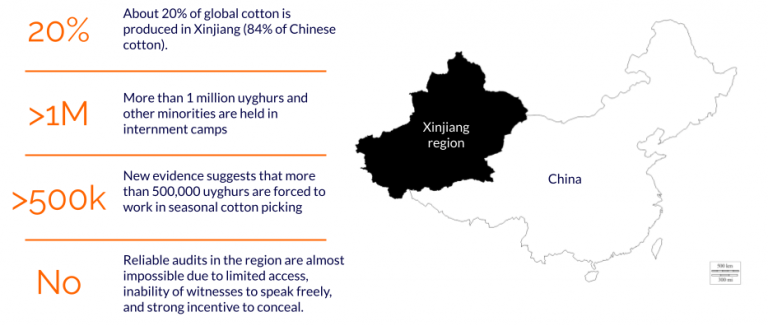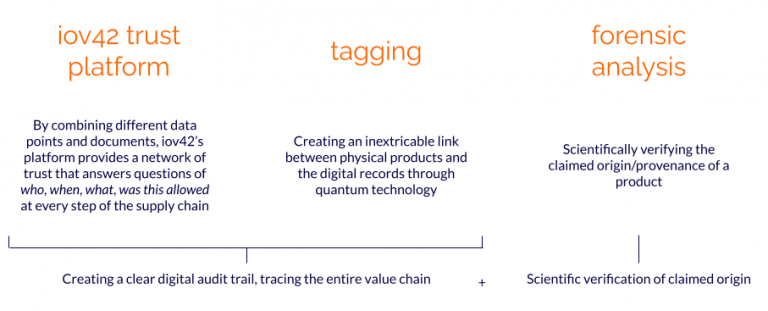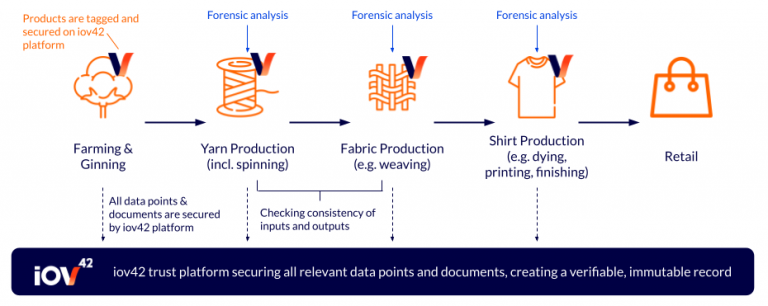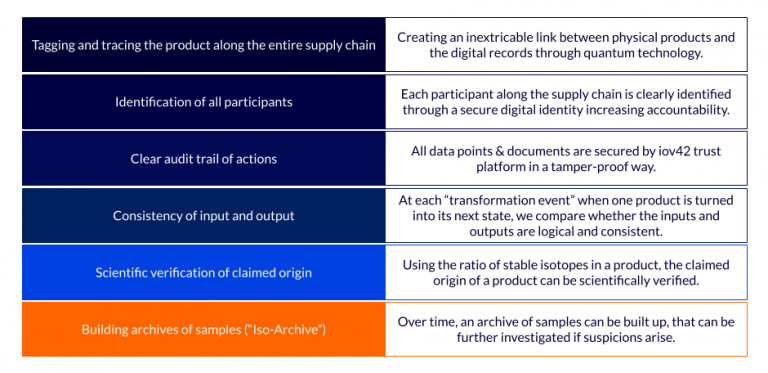China has been the subject of increasing international scrutiny for its detainment and “re-education” of more than one million members of the muslim-majority Uyghur community, along with other ethno-religious minority groups.
Since the Chinese Communist Party announced a “people’s war on terror” in 2014, it has built up a network of what the Party calls “re-education camps” across China’s Xinjiang Uyghur Autonomous Region (XUAR).
The camps are the site of reported human rights abuses, such as forced sterilisation, as well as forced labour. New evidence suggests that more than 500,000 detainees are being forced to work in the region’s booming textile industry, which supplies 84% of China’s cotton and 20% of the world’s cotton.
And with no way to truly verify the integrity of cotton coming out of the Xinjiang region, businesses and public bodies around the world face a significant risk of sourcing cotton from suppliers that are complicit in the use of forced labour.

One country that has taken swift action to combat forced labour in Xinjiang’s cotton production is the U.S. For example, the US Customs and Border Protection agency issued a Withhold Release Order that bans imports of all cotton products from the XUAR to the US. Furthermore, the Uyghur Forced Labor Prevention Act, which would ban all goods manufactured or produced in Xinjiang, has already passed the US House of Representatives with bipartisan support (406-3). It is yet to be passed by the US Senate. These types of sweeping embargoes reflect the reality that there is no reliable way to prove goods coming out of Xinjiang are not the result of forced labour.
In the future, other countries may enact similar import bans and/or legislation.
At the same time, consumers are becoming more and more aware of the situation in Xinjiang and want to make sure not to indirectly support forced labour (see, for example, The Guardian).
Increasing public and regulatory pressure has led many of the world’s largest cotton users and fashion brands to publish dedicated statements on how Xinjiang is impacting their supply chains and how they are dealing with it (see, for example, Nike, H&M, PVH, C&A, Inditex). The brands issuing these statements confirm that they do not source cotton from Xinjiang.
However, turning raw cotton fiber into finished material requires the mixing of fibers from different farms to facilitate expediency and achieve uniform quality. This means that there is a real risk that cotton from Xinjiang is being mixed into cotton from other locations — inadvertently or even surreptitiously. So even when brands make an explicit decision to not source cotton from Xinjiang, they may still be receiving cotton that comes from the region – and is therefore likely tainted with forced labor.

An effective solution that would enable global brands to verify their cotton supply chains aren’t supporting forced labour must do two things:
This can be achieved by combining three different technologies:


In summary, this system provides 6 layers of security:

It is difficult to exaggerate the horrors of the reported situation of the Uyghurs in China: millions are thought to be held in detainment camps, and new evidence suggests that more than 500,000 people are being forced to pick cotton and work in the region’s textile factories.
Considering that Xinjiang accounts for about 84% of the country’s and 20% of the world’s cotton supply, the growing international backlash to the human rights crisis in Xinjiang threatens to disrupt complex international cotton supply chains at an unprecedented scale.
Numerous global brands have made public commitments to stop sourcing cotton from Xinjiang, but a risk remains that cotton from Xinjiang is being mixed into cotton from other locations.
iov42 and our partners believe this problem could be solved through technology.
The iov42 trust platform secures all relevant data points and documents. This way, we build a network of trust that answers questions of who, when, what, how at every step of the supply chain. By combining this with a quantum technology-based tagging technology, we can create a clear audit trail of actions, linked to trusted digital identities. Lastly, using the ratio of stable isotopes in a product, the claimed origin of a product can be scientifically verified.
As a result, we can build a solution that reliably verifies that the cotton used in a product did not originate from the Xinjiang region, and demonstrate this effectively internally, regulators, customers & consumers.
Do you want to learn more about this solution? Send a message to contact@iov42.com
By submitting your email you consent to receive iov42 newsletters by email. You can unsubscribe at any time. For further information, please see our Terms and Conditions and Privacy Policy
